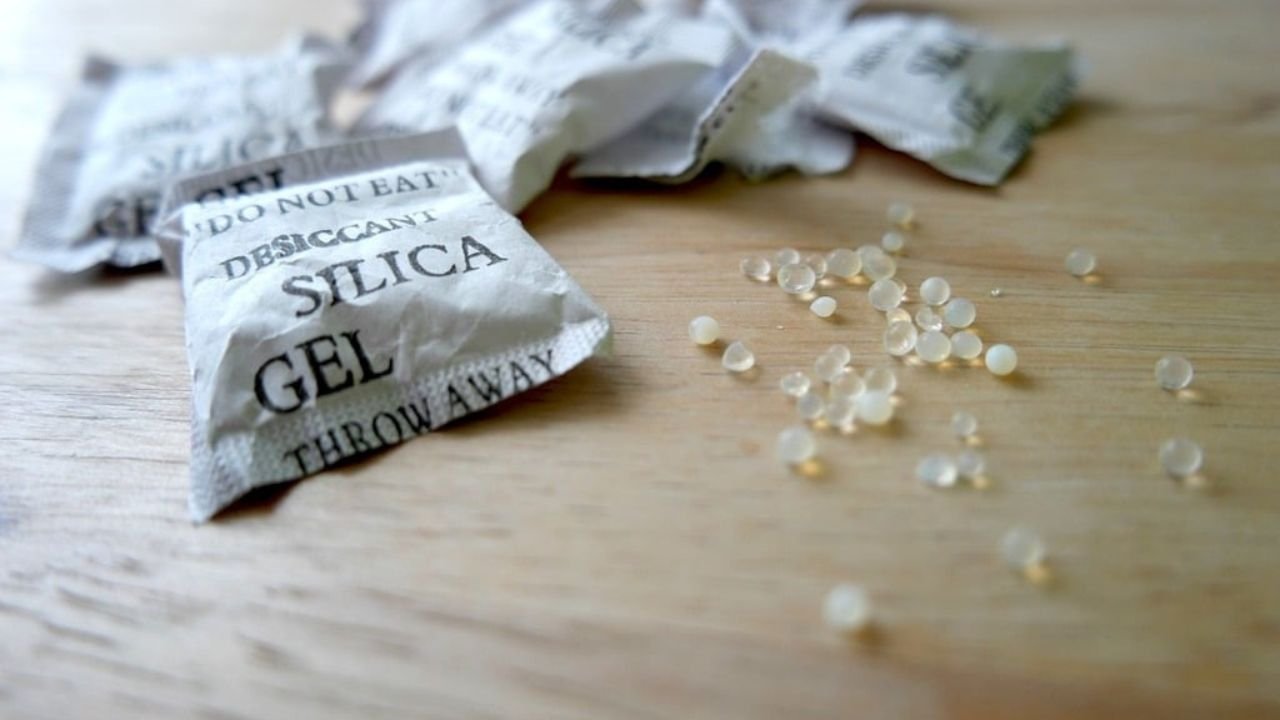When you’re preparing for a flight, packing your bags can be a stressful task, with tons of things to consider. One of the more common items people often wonder about is silica gel packets.
These tiny packets, typically found in shoeboxes, electronics, or even food products, are meant to absorb moisture and keep things dry.
But when it comes to flying, can you bring silica gel on a plane? This article will answer that question in full detail, covering everything you need to know about silica gel and air travel, from airport security policies to the possible risks involved.
Contents
- 1 What is Silica Gel?
- 2 The Science Behind Silica Gel’s Safety on Planes
- 3 Can You Bring Silica Gel on a Plane?
- 4 Carry-On Luggage: What You Need to Know
- 5 Can Silica Gel Be Dangerous on a Plane?
- 6 Other Considerations When Traveling with Silica Gel
- 7 Frequently Asked Questions
- 8 Conclusion: Can you bring silica gel on a plane?
What is Silica Gel?
Silica gel is a desiccant, a substance that absorbs moisture from its environment to help prevent spoilage, mold, and mildew in various products.
You’ll commonly find silica gel in packaging for electronics, shoes, or food, often inside little packets labeled “Do Not Eat.”
While it’s not harmful in small amounts, the packets are not meant for consumption, and they serve as an effective tool for keeping items dry.
The Science Behind Silica Gel’s Safety on Planes
So, why would you even need to ask whether you can bring silica gel on a plane? After all, it’s not exactly a dangerous or flammable material.
The truth is, silica gel itself is generally considered safe, but there are still rules and regulations around bringing it through airport security.
To better understand whether you can bring it onboard, it’s important to break down the science behind silica gel and its behavior on a plane.
The desiccant works by drawing in moisture from the air, which is why it’s often used in packaging to prevent items from getting damaged by humidity. On a plane, the environment is quite different from what you might experience on the ground.
The temperature and air pressure fluctuate during a flight, and the cabin is often dry, which makes silica gel even more effective at absorbing moisture. However, because it’s a small, non-toxic material, it’s unlikely to pose any risk in most circumstances.
Can You Bring Silica Gel on a Plane?
The short answer is yes, you can bring silica gel on a plane. It is not considered a prohibited item by the Transportation Security Administration (TSA) or most international airlines.
However, there are a few important considerations to keep in mind when traveling with silica gel, especially when you’re packing it in your carry-on luggage or checked baggage.
Carry-On Luggage: What You Need to Know
If you’re packing silica gel in your carry-on luggage, there are no strict regulations forbidding its presence. The TSA doesn’t specifically list silica gel as an item that’s restricted, so it’s perfectly fine to bring small packets onboard with you. However, you should consider the following points:
- Small Quantities: The silica gel packets you typically find in packaging are small and pose no threat. It’s best to pack small quantities to avoid attracting unnecessary attention during security screening.
- Clear Packaging: If you’re carrying multiple packets of silica gel, place them in a clear, resealable plastic bag. This will help security staff quickly identify the items during the screening process.
- Do Not Carry in Excess: Bringing large quantities of silica gel may raise suspicion. While it’s safe, carrying an unusually large number of packets might make security staff ask questions, especially if you’re traveling internationally. It’s advisable to pack just the amount you need.
- TSA PreCheck: If you’re a TSA PreCheck traveler, you won’t need to remove your silica gel packets from your bag during security screening. However, still ensure the packets are properly packed and clearly visible.
Checked Luggage: Is Silica Gel Allowed?
When it comes to checked luggage, the rules are even more relaxed. Silica gel packets don’t pose a fire risk or a chemical hazard, so you are free to pack as much of it as you need in your checked bags.
The only concern might be if the packets are packed in larger quantities, especially if they spill open and mix with other items in your luggage. To avoid messes, it’s recommended to seal them in sturdy bags or containers.
Can Silica Gel Be Dangerous on a Plane?
Despite its safe reputation, there are some risks to be aware of when traveling with silica gel, particularly in larger amounts or if it’s ingested. Here are a few things to keep in mind:
- Ingestion Hazard: Silica gel packets typically contain small beads of silica, which can be dangerous if ingested. For this reason, it’s always labeled as “Do Not Eat.” If you have children or pets with you, be sure that the silica gel packets are not easily accessible, and keep them securely stored in your luggage.
- Spilling Risk: If a silica gel packet bursts open and spills its contents, it can create a mess in your luggage, particularly if it mixes with other products like electronics, liquids, or foods. While the silica itself isn’t harmful, cleaning up the spill can be annoying.
- Airline Policies: While the TSA allows silica gel, individual airlines may have their own policies on what you can and cannot bring on board. Always double-check your airline’s specific rules before packing silica gel in your luggage.
Other Considerations When Traveling with Silica Gel
If you’re planning on bringing silica gel with you for a specific purpose, such as keeping your electronics dry, you should consider a few other points:
- Storing Electronics: If you’re packing electronics like cameras, phones, or laptops, placing a silica gel packet inside your bag can help protect them from moisture damage. However, it’s important to ensure the silica packet isn’t directly in contact with the device to prevent it from blocking ventilation or causing overheating.
- Humidity Concerns: Since planes are typically very dry, silica gel can be particularly useful during long flights. If you’re traveling to a humid destination, you may want to keep a packet or two in your carry-on to help preserve the contents of your bag, such as makeup or important documents.
See Also: Can You Bring Super Glue On A Plane?
Frequently Asked Questions
1. Can I Bring Silica Gel in My Checked Luggage?
Yes, silica gel is safe to bring in your checked luggage. There are no restrictions on the amount, but it’s best to pack it securely to avoid spills.
2. Are There Any Restrictions on Silica Gel for International Flights?
Silica gel is generally safe for both domestic and international flights. However, always double-check the specific regulations of the country you’re traveling to, as some places may have slightly different rules.
3. Is Silica Gel Safe for My Electronics During a Flight?
Yes, silica gel packets can help protect your electronics from moisture. Just make sure they are placed in a way that doesn’t interfere with any ventilation openings.
4. What Happens If I Ingest Silica Gel?
Ingesting silica gel can cause mild discomfort but is generally not harmful. It can lead to gastrointestinal irritation, so if someone accidentally consumes silica gel, seek medical advice.
5. Can I Bring Silica Gel Through TSA Security?
Yes, you can bring silica gel through TSA security. However, if you’re carrying multiple packets, ensure they are in clear packaging to make the screening process easier.
Conclusion: Can you bring silica gel on a plane?
So, now you know—bringing silica gel on a plane is perfectly safe and allowed, both in your carry-on luggage and checked bags.
Whether you’re protecting electronics, keeping clothes dry, or just ensuring your items stay moisture-free, silica gel is a handy tool for travel. Just be mindful of the amount you bring and how it’s packaged to ensure a smooth trip through airport security.
Next time you pack, feel free to toss a few silica gel packets in your bag without any worries. They’re one of those little travel hacks that can make a big difference in ensuring your belongings arrive in perfect condition!

Hello, I’m Janiyah Gibbs—a retired flight crew member and former TSA officer from Alaska, USA. At PlaneCarry.com, I share expert insights on what to carry (and avoid) when flying.

